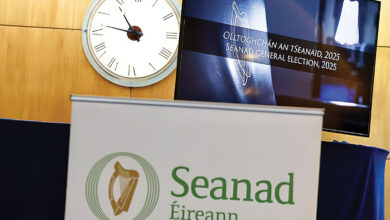David Murtagh: a blank canvas
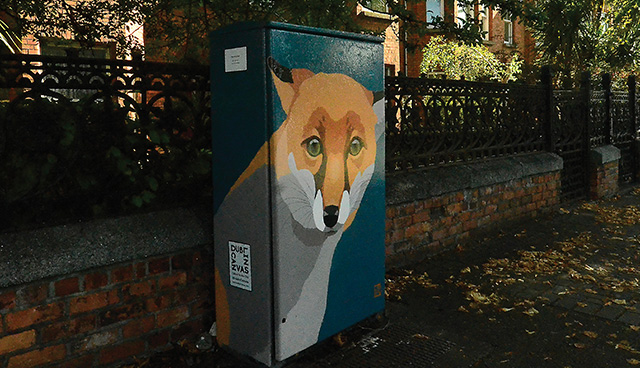

Dublin keeps on changing. For several years now, innocuous and dreary street furniture has been transformed as a wave of technicolour renewal sweeps across the city. Ciarán Galway meets with Dublin Canvas Project Co-ordinator David Murtagh within walking distance of Baggott Street, one of the first locations where the project came to life in summer 2015.
Today, it is hard to avoid the urban transformation which is occurring in Dublin. The metaphoric green shoots of economic recovery – a proliferation of tower cranes – now litter the skyscape. At street-level, another more alluring sign of recovery is flourishing. The innovative Dublin Canvas public art project has unfurled itself, with the assistance of Dublin City Council, to reclaim the character of the streets as ‘the great unyielding concrete’ makes a city of the town. The same Dublin now in ‘the quare oul’ times’.
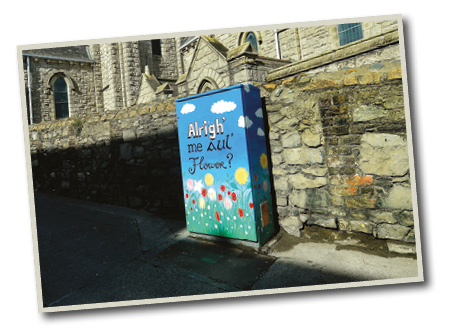 The concept of reimagining the city’s copious traffic light control boxes with community inspired artwork is a simple one, and yet the change created is conspicuous. David Murtagh, the Project Co-Ordinator, summarises how Dublin Canvas was conceived: “I was backpacking in Australia in 2006 and came to work on building sites in Brisbane. I stumbled across a similar project there and thought it would be a fantastic to bring back to Dublin.
The concept of reimagining the city’s copious traffic light control boxes with community inspired artwork is a simple one, and yet the change created is conspicuous. David Murtagh, the Project Co-Ordinator, summarises how Dublin Canvas was conceived: “I was backpacking in Australia in 2006 and came to work on building sites in Brisbane. I stumbled across a similar project there and thought it would be a fantastic to bring back to Dublin.
“I returned to Dublin in 2007 and we had a small pilot project up and running in Temple Bar by 2008. It was pretty successful and we were hoping to build on that, but with the crash there was just no money for public art.”
Then in 2015, while going through a redundancy from a large multinational, Murtagh approached Dublin City Council about resurrecting the project. “In the meantime, between 2011 when the Invoke Street Art project finished and 2015 when Dublin Canvas started, Dublin City Council’s Beta Project ran a pilot project between Smithfield and Capel Street with 11 boxes. It was a kind of half public art and half anti-tagging or anti-vandalism initiative,” he explains.
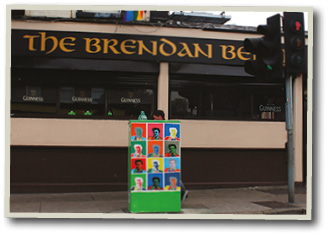 The success of the pilot placed Murtagh in the right place at the right time. “In 2015, they were going to roll it out and I already had experience with the 2008 to 2011 Invoke Street Art project. So, I put a proposal together. We started out with 15 boxes – five in Baggott Street, and 10 dotted from Rathmines, down Camden Street to Wexford Street,” he details.
The success of the pilot placed Murtagh in the right place at the right time. “In 2015, they were going to roll it out and I already had experience with the 2008 to 2011 Invoke Street Art project. So, I put a proposal together. We started out with 15 boxes – five in Baggott Street, and 10 dotted from Rathmines, down Camden Street to Wexford Street,” he details.
“I returned to Dublin in 2007 and we had a small pilot project up and running by 2008 in Temple Bar. It was pretty successful and we were hoping to build on that, but with the crash there was just no money for public art.”
Beginning in July 2015, the first wave was completed by mid-August. Initial success then yielded the painting of an additional 20 boxes on the southside and a further 20 on the northside. Overall, 55 boxes were completed that year. In 2016, the project expanded to encompass the remaining three Dublin City Council areas and close to 100 boxes were completed. Then in 2017, a further 93 boxes were finished.
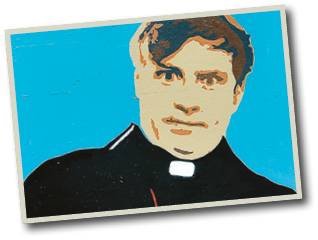
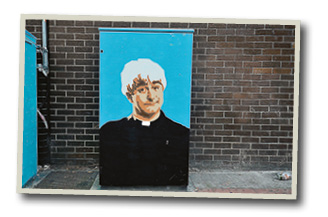
Accessibility
Rather than act as a vehicle for the artistic élite, Dublin Canvas utilises the virtuosity of Dublin’s general populace and anyone can submit proposals to stake a claim to their own 3D canvas. Artists, block layers, college students, doctors, scientists, barristers and many more have turned their hand to the project.
“The artists behind the project are made up of residents in Dublin, including non-nationals. The ratio is probably around 3:2 female to male, ranging from those aged 18 to retirees across all walks of life.” According to Murtagh, this accessibility has been its strength. “That’s why Dublin Canvas is so successful – it’s not cliquey – which has been a factor in why other public art projects aren’t as successful. I don’t know any of the artists beforehand.”
“There’s one box in Baggott Street that I’ve had my eyes on…”
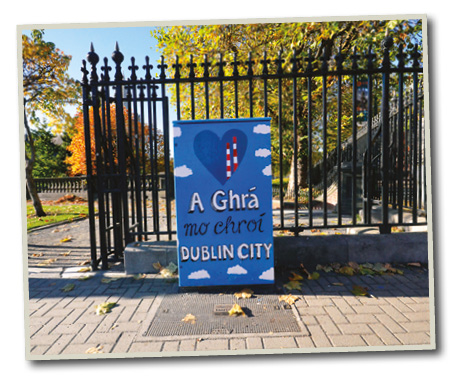
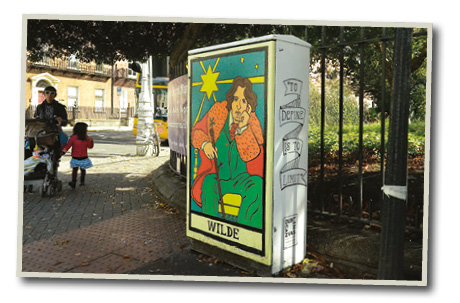
While always intending to contribute his own art, as things stand, none of Murtagh’s pieces have been painted. “I keep meaning to do one or two boxes but by the end of the year the last thing I want to see is a box. This year I have to do one. There’s one box in Baggott Street that I’ve had my eyes on,” he reflects.
“Each box is primed with a matt white and all the artwork is hand-painted. We supply all the materials to each of the artists. They come in a portable pack which includes industrial paints, all the brushes, traffic cones and hi-vis jackets and there’s a payment for each artist. Some people are surprised by that but I wouldn’t be involved otherwise.”
The project is completely funded by the City Council which has responsibility for the traffic signal boxes and artwork is selected by the public domain officers, the planning department and the Dublin City Arts Office. Primarily located at traffic junctions, the vivid artwork attracts the gaze of pedestrian, cyclist and motorist alike, with each piece is required to bear relevance to its surrounding locality and populace.
“The whole idea is to ‘colour in the city’,” emphasises Murtagh. “I like the colourful pieces that take in the historical nature of Dublin, for example Hugh Madden’s work. Hugh is a Dublin-based barrister and illustrator from Cork and he’s completed seven pieces, which is more than any other artist. I really love his animated versions of history, including the Molly Malone and Viking pieces.”
“There’s a payment for each artist. Some people are surprised by that but I wouldn’t be involved otherwise.”
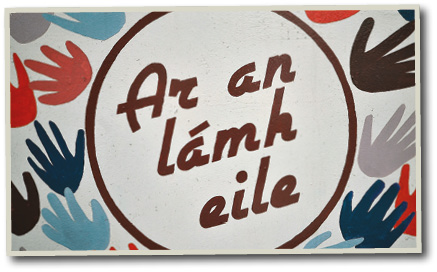
Later this summer, the Project Co-Ordinator’s ambition is to expand the Dublin Canvas tagline from ‘colour in the city’ to ‘colour in the county’. “To do that, we have to get the other three Dublin councils on board. I have already signed a contract with South Dublin County Council, and Fingal County Council have agreed to 60 boxes, while Dún Laoghaire-Rathdown County Council is 90 per cent there,” he reveals.
“I like the colourful pieces that take in the historical nature of Dublin…”
There are 193 pieces in Dublin at present, but close to 225 have been completed. In 2017, some boxes from 2015 were replaced with new art and one or two had to be removed. Under Dublin City public art planning laws, the artworks are designated as temporary installations, with each piece having a three to four-year lifespan. “I think we’ll stick to that. But some of the pieces will never be painted over,” Murtagh concludes.
The boxes, like Dublin itself, will keep on changing, because nothing stays the same.
Profile
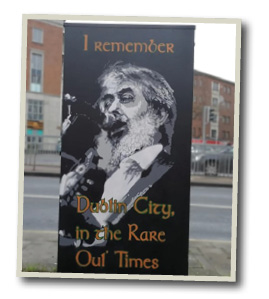
A native Dub, Murtagh studied media production in Ballyfermot College before completing a diploma in music management. He then worked in event management for three years, managing bands and running events. “That was prior to Spotify, back when there was a music industry. It’s a heartless industry so I’ve no interest in being part of that anymore,” he states ruefully.
After time spent travelling, he returned to work in a data control role for a large multinational. Asserting that it “wasn’t relevant” to him, Murtagh pursued public art projects. Alongside an interest in media he occasionally paints and draws.
In the immediate future, he hopes to expand the Dublin Canvas project into the remaining council areas within Dublin before helping to establish a network of sister projects in Galway and possibly Belfast.
A callout for summer 2018 submissions has now been announced and painting will commence from 1 May.





